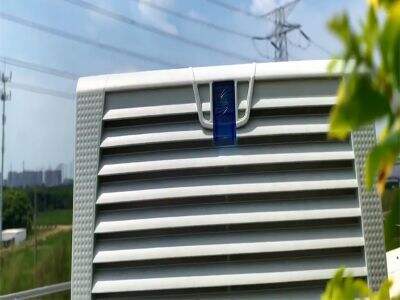For effective heat removal in cabinets, there are primarily two choices: forced air cooling and natural convection cooling. There are specific pros and cons to each approach. Knowing the distinctions between these two techniques can help you better select the appropriate heat dissipation solution for your unique requirements.
A Comparison:
Forced airflow cooling uses fans or blowers to recirculate air within the cabinet to cool down electronic parts that generate heat. This strategy can rapidly cooling and keep the tempering inside the cabinet cooling. But, forced air-cooling can be loud and needs to be maintained regularly so that it works at its best. Your computer's built-in cooling system, however, only cools as air goes by to refresh it -- this is where passive methods like heat sinks or heat pipes come in to draw heat from the devices. Though it proves to be gentler on the ears and more energy efficient, it will not achieve cooling your cabinet as fast should you place this beside a hot grill for example.
In the pressure air cool and natural cooling comparison, improving radiative dose fixing details to be take into consideration such is limited by extent cooling overall efficiency, consumed energy degree, maintain the effort size in the low temperature used of noise. Forced air cooling systems are generally stronger and can produce faster temperature reduction which is suited to cabinet heater with high heat loads. But they can consume more power and be noisier than natural convection cooling. In contrast, passive cooling solutions are quiet and energy efficient, but may not have the same cooling capacity as forced air type systems.
Select Proper Heat Dissipation Solution:
There are pros and cons of both forced air cooling and natural convection in this area. By comparing the respective advantages and shortcomings of types of cooling, and technically calculating the heat dissipation of your project, you can select optimal heat dissipation solution for your project. Just don't forget about efficiency, performance and long-term reliability as you consider cooling options for your cabinet ac.
Heat Dissipation Cabinet Solutions Wholesale Purchasers’ Guide to the:
There are some different options for wholesale buyers to consider when selecting a heat dissipation solution for their cabinets. Forced air cooling and natural cooling are two favorite options. Forced air cooling refers to circulating air with the help of fans and expelling heat from the cabinet, while natural heat dissipation is at work through passive mechanisms like vents and heat sinks.
For larger buyers who want an affordable option, they are hoping that natural heat dissipation is the answer. No such components as fans to be added are needed in this method and thus cost is reduced. But heat dissipation of nature may not be better comparing with forced cooling, espe-cially in high-heat-load cabinet.
Factors to Consider to Get the Best Wholesale Heat Dissipation Solutions for Cabinet Cooling
Regular maintenance of the heat dissipation solution is also critical to ensure that it works efficiently. Vents, fans, and heat sinks accumulate dirt and dust; when this happens, the functionality of the heat dissipation system is compromised. For instance, this will lead to insufficient air circulation or slow dissipation mechanisms in the case of fans and heat sinks. Factors to be considered are the size of the cabinet and the heat load. Were a high heat load prevails, forced air cooling would be the most appropriate solution. Finally, on maintenance, a heat dissipation system should be checked at specified intervals to ensure that the above factors are wholly considered.
In contrast, passive heat dissipation is cheaper and does not need more equipment, such as fans. This is a very simple, low-effort install and perfect for cabinets that are tight on space/budget. However, passive heat dissipation may not be sufficient to remove heat from the cabinet as efficiently as by forced air cooling.
Conclusion
Wholesalers need to consider their specific requirements and budgets when deciding on a cooling solution for cabinets. Forced air cooling provides efficient cooling but is expensive and natural heat dissipation is an economical solution, lower in cost (and possibly less in performance). Is there a heat dissipation solution that makes sense, and are AMP buyers doing enough to ensure their systems remain cool? If they give these questions the proper consideration they deserve, AMP purchasers can select the optimal answer to keeping their cabinets cool and equipment running normally.


